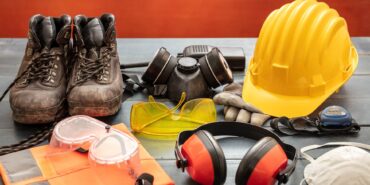
Identifying workplace hazards is a key ingredient in a successful business and healthy workforce. Preventing injuries and/or property or equipment damage protects your most valuable assets. Recognizing hazards and the condition or conditions that can lead to injury are vital to meeting compliance, schedules, and financial projections. All work places have some inherent hazards, naming these hazards and working to mitigate their possible results is integral to keeping your workforce healthy and on the job. RHP Risk Management can help identify and rank hazards in your workplace and provide manageable and meaningful solutions.
Methods to Identify Common Work Hazards
Having an effective and efficient system in place to identify hazards and anticipate situations can lead to a safe working environment and prevent injuries. Some common methods for identifying hazards include:
- Developing a hazard map, an outline of your workplace and mark potential and known hazards. Be sure to involve workers in this process by requesting feedback thereby increasing awareness of how you are making safety important in your workplace. Remember to consider hazards associated with emergency or nonroutine situations and anticipate incidents, use the information to prioritize process changes and/or corrective actions.
- Interviewing managers, floor supervisors and workers to understand their concerns and take their comments into your walkthrough.
- Conducting periodic workplace inspections and pay particular attention to areas or processes that continue to show injuries, illnesses, incidents, and close calls/near misses. A proactive, ongoing process is critical to identifying and assessing hazards.
Common Workplace Hazards
By recognizing what hazards to watch for and anticipate others, you can mitigate and/or prevent workplace accidents, incidents and near-misses.
Many workplace hazards fall within the following categories:
1. Safety Hazards
The most common type of workplace hazard relates to safety. This type of hazard is inherently present in high-risk work environments, such as construction sites. Safety hazards can lead to illness, injury and even death. Examples include:
- Spills.
- Confined spaces.
- Unguarded machinery.
- Moving machinery parts.
- Working from high surfaces like roofs, scaffolds and ladders.
- Tripping hazards, like blocked aisles, cords, or unguarded openings.
- Electrical hazards, from improper wiring, missing ground pins and frayed cords.
2. Chemical Hazards
Chemical hazards refer to exposures from a chemical in solid, gas or liquid form. Chemicals can lead to breathing problems, skin irritation, illness, and death. Examples include:
- Gases, such as propane, helium, acetylene and carbon monoxide.
- Fumes or vapors, such as from solvents, chlorine and welding.
- Flammable materials, such as solvents, gasoline and explosive chemicals.
- Liquids that contain chemicals, such as paints, solvents, acids, pesticides and cleaning products.
3. Biological Hazards
Biological hazards are those that come from working with people, animals or infectious plant materials. Those who work in hospitals, schools, laboratories, day care facilities, outdoor occupations and nursing homes can be at an increased risk. Examples include:
- Mold.
- Bacteria.
- Viruses.
- Standing or stagnant water.
- Insect, reptile, animal and human bites.
- Animal fluids and droppings.
- Human blood, feces and other bodily fluids.
4. Ergonomic Hazards
Ergonomic hazards are those that occur when the working conditions, body positions and type of work strain the body. These hazards are some of the most difficult to identify since the strain isn’t necessarily instantaneous. Short-term exposure to ergonomic hazards could lead to soreness, while long-term exposure could lead to serious illnesses or injuries. Examples include:
- Improperly adjusted chairs.
- Poor posture or injury adjusted posture.
- Repetition of the same movement.
- Frequent lifting and/or lifting too much weight.
Workplace Hazard Assessment
Mitigating hazards in the workplace should be a top priority. The process of identifying hazards and controlling risks involves gathering existing data to recognize the hazards and inspecting the workplace and conducting investigations following incidents to anticipate future concerns. OSHA states that a root cause of workplace injuries, illnesses, and incidents is due to failure to properly recognize hazards that are present.
How can RHP Help You to Manage Common Workplace Hazards?
Risk is a combination of hazard and exposure, and, by assessing risk, employers can understand and prioritize hazards throughout their workplace. At RHP Risk Management, we specialize in data-driven and manageable solutions your company can trust. Our environmental and occupational consulting firm is comprised of teams of risk assessors, public health professionals, scientists, and environmental economist and a cultural anthropologist who can offer services for industrial hygiene, environmental engineering, human health risk assessment and exposure science. Contact us to learn more about recognizing hazards in the workplace and how we can help by calling (773) 867-6010.
